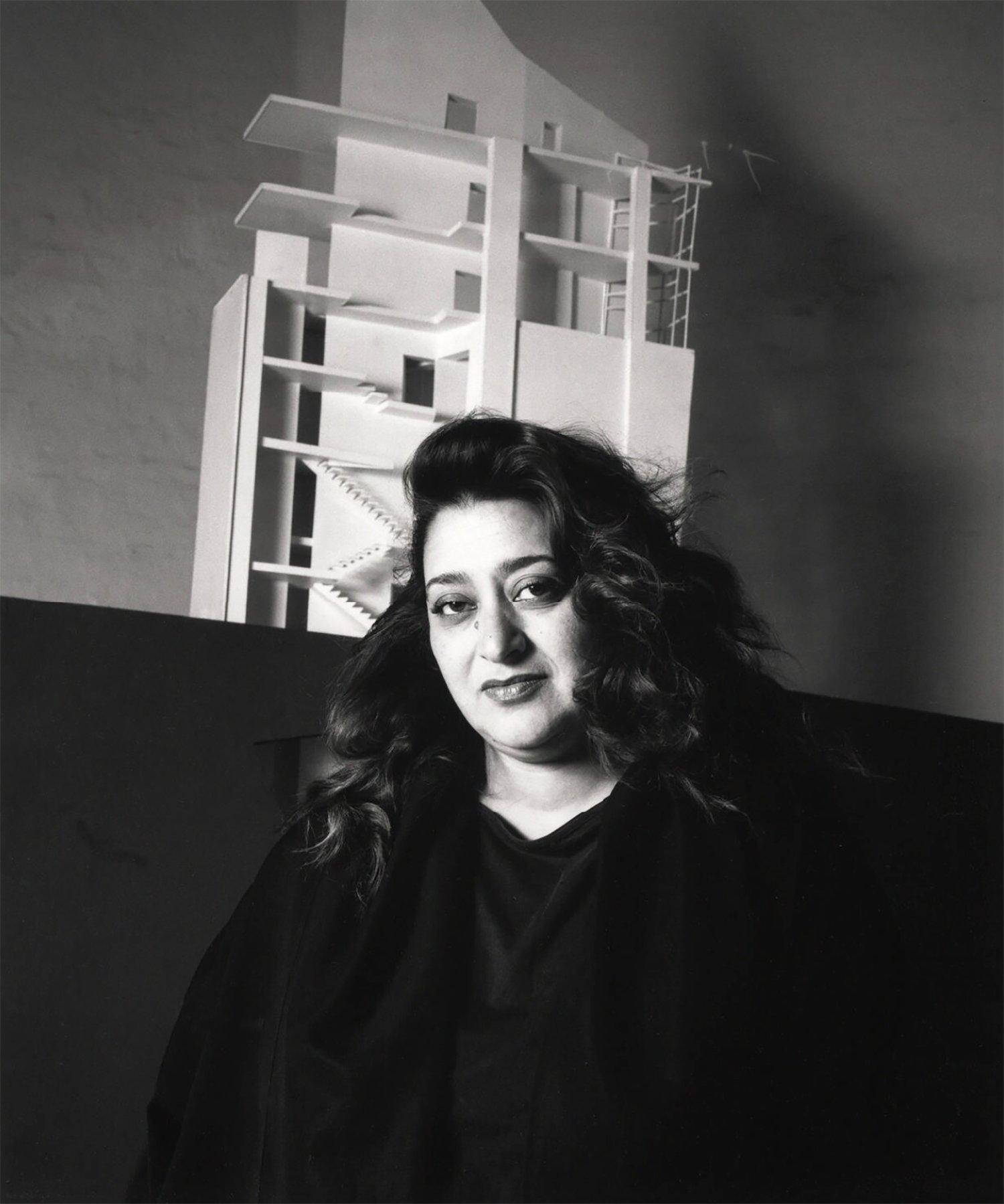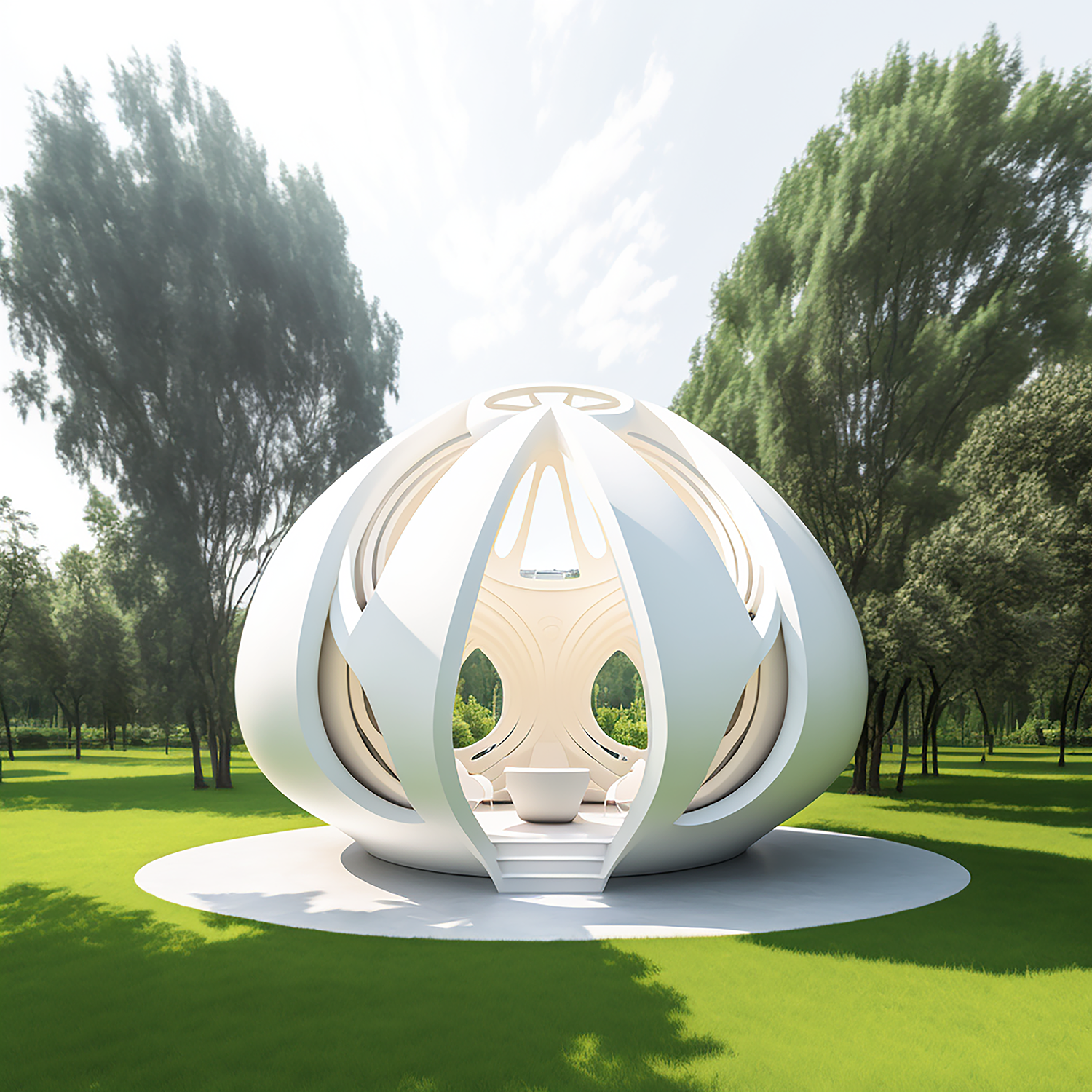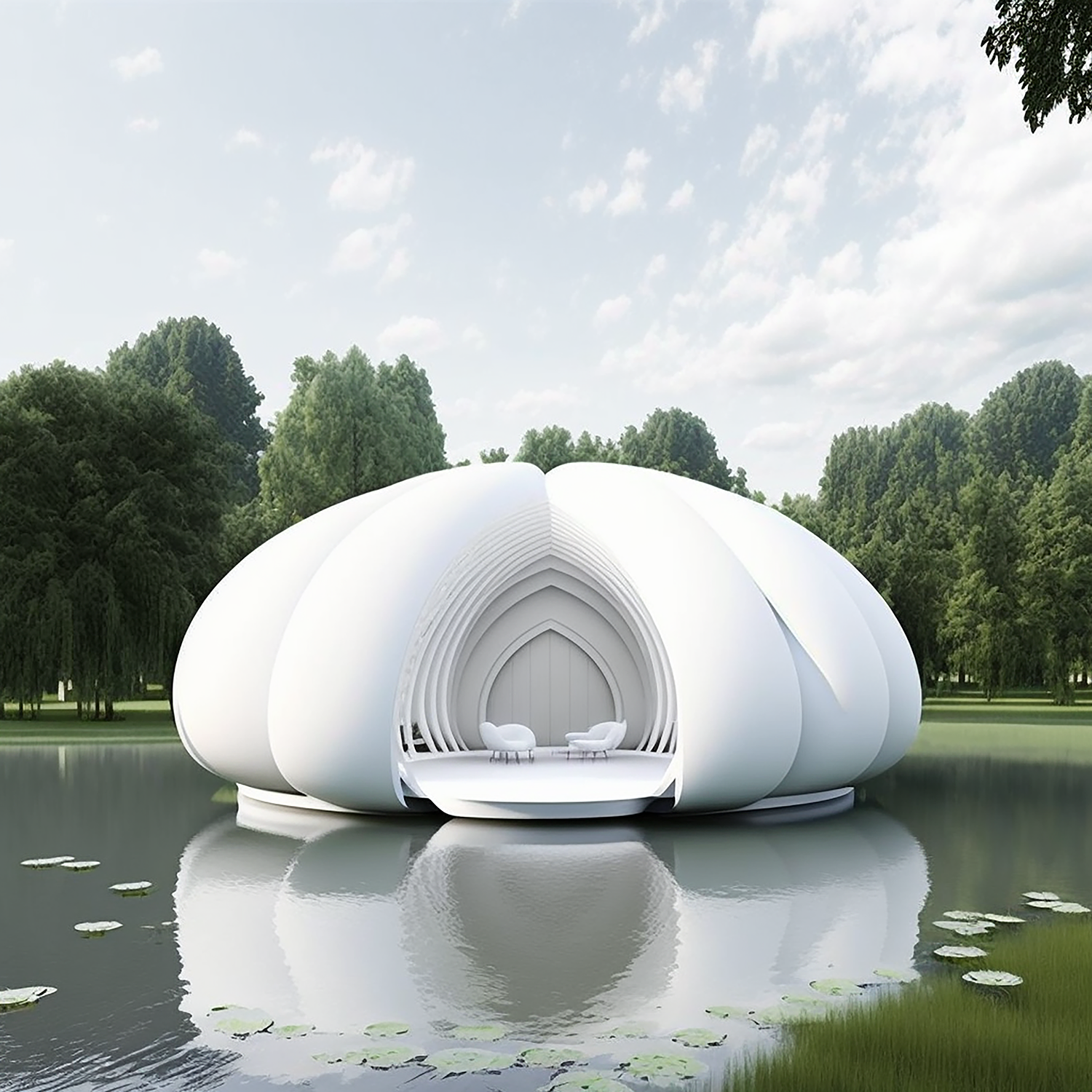The Sama Series of Meditative Structures And The Future of Artificial Intelligence
Sama 001, Executive Producer: Ajani Chares, Art Director: Ajani Charles, Designer: Ajani Charles, Created Using Midjourney
I conceptualized the Sama series of meditative structures in December 2022. I aim to have at least one of the structures built in a major city, ideally within the next two years, regardless of how arduous or complicated the process may be. I had Midjourney’s generative artificial intelligence create the initial visual representations of the series through several text-based prompts for seven primary reasons.
Firstly, at an aesthetic level, the Sama structures are in part based on the conch shells used by Krsna and Arjuna, the protagonists of the Bhagavad Gita. This epic story, an essential component of the Vedas, is my favourite book and has significantly influenced my life.
So, Sama is a tribute to the Vedas, specifically the Bhagavad Gita, and the wisdom of Vedic India is embodied throughout each structure.
The series also acts as a tool to introduce the Vedas to those who are unfamiliar with them.
Secondly, Sama is partly inspired by the work of Zaha Hadid, one of my favourite visual artists, architects, and designers.
Hadid, the first woman to receive the coveted Pritzker Architecture Prize, was known for her innovative and fluid designs, often defined by vast sweeping curves and bold, futuristic forms. Sama is partly a tribute to her life, career and influence on architecture, design, and humanity.
Visual Artist, Architect, Designer: Zaha Hadid, Year: 1994, Photographer: Emily Andersen
When I first witnessed and photographed some of her structures in Beijing, China, in 2012, my mind was blown, and I wish I had met and photographed Zaha Hadid before she died in 2016.
Thirdly, sama is a Sanskrit word that describes the quality of calmness and tranquillity of the mind, which is highly valued in the Vedas and yogic philosophy.
It is an experience of inner peace and serenity, as described by ancient yogis.
To experience sama, the mind must be under control.
So, the Sama series is based on the need for inclusive public spaces that promote sama through meditation, especially in many parts of North America, Europe, Asia, and elsewhere, places where the pace of life and many social norms are not conducive to cultivating mental health.
Fourthly, I wanted to become familiar with Midjourney and other forms of generative artificial intelligence and large language models to understand their potential and implications firsthand. In many cases, especially those involving commercial projects with extreme time constraints, Midjourney is likely more effective and convincing to potential stakeholders than creating storyboards and sketching concepts by hand.
Location: Wangjing Soho, Beijing Municipality, Beijing, China, Year: 2015, Architect: Zaha Hadid, Photographer: Virgile Simon Bertrand
Steve Jurvetson is an American businessman and venture capitalist who helped me understand the rapid pace of AI's evolution.
He was an early investor in Hotmail, Mythic and Nervana Systems; he is currently a board member of SpaceX, served on Tesla's board from 2006 to 2020, and is one of Elon Musk’s many business partners.
After photographing him at Elevate in 2019 on behalf of Operation Prefrontal Cortex, I began speaking to him by e-mail.
Among other valuable insights, he told me that Moore's law is currently on steroids and is manifesting at a pace that the average person cannot fathom.
For those unfamiliar, Moore's law is the observation that the number of transistors in a dense integrated circuit (IC) doubles approximately every two years.
So, according to Moore's law, the computer processors used to create most of the technology we use, including but not limited to AI, double in processing power about every two years.
Sama 002, Executive Producer: Ajani Chares, Art Director: Ajani Charles, Designer: Ajani Charles, Created Using Midjourney
Jurvetson told me that the doubling of processing power occurs much faster than that today.
If he is correct, then the generative artificial intelligence, large language models, and other forms of AI that we, the general public, can access will be child’s play compared with what will be available in a year or two.
Thus, I want to understand what we are getting into, and other AI tools that I have used to my benefit include, but are not limited to, Grammarly, ChatGPT, Rationale, and Adobe Podcast.
Toby Walsh is a Laureate fellow and professor of artificial intelligence in the UNSW School of Computer Science and Engineering at the University of New South Wales.
He is considered an expert on artificial intelligence by many. In a recent exclusive interview with Moneycontrol, Walsh discussed morality and ethics in the development of technology and the danger of handing over decision-making to machines.
In regards to the ethics of AI specifically, he stated the following in the interview mentioned above:
Sama 003, Executive Producer: Ajani Chares, Art Director: Ajani Charles, Designer: Ajani Charles, Created Using Midjourney
“The good news is that a growing academic subfield of AI is looking at how to view AI responsibly. Many researchers are turning their minds to these questions. However, one of the challenges of this field is that it requires people from all different disciplines. It requires not just technologists like myself to understand how the technology works or how the technology breaks, but it also requires philosophers who understand fundamental questions about philosophy. It requires anthropologists to understand how humans respond in any situation; it requires psychologists who understand the human psyche. It requires economists to understand crucial economic questions. It requires political scientists to understand how it could affect regulation changes to do with these challenges. It requires people from the humanities who frame their perspectives about ultimately what sort of society we want to build. And the novelists and poets who have asked these questions very well in the past.”
Fifthly, generative artificial intelligence, large language models, and other forms of artificial intelligence have initiated several vital conversations online and elsewhere on the short-term and long-term implications of different forms of artificial intelligence.
The subjects of such conversations include, but are not limited to, what art is and who ought to be considered an artist, how artists ought to be compensated for their work when it is used in the data sets used to train different forms of artificial intelligence, how artificial intelligence will impact the global workforce, what the preconditions for an original idea are, how artificial intelligence will impact human consciousness and mental health en masse, if or how artificial intelligence is harmful, if or how artificial intelligence will become sentient, and much more.
The Sama series is a way for me to initiate, participate in, and facilitate such conversations using a variety of mediums.
Sixthly, by sharing the images of the Sama series of meditative structures available herein with my audience, online and otherwise, and by announcing that I will do everything in my power to have at least one Sama meditative structure built in a major city, whether it be Toronto or otherwise, I will likely transcend cognitive dissonance and laziness while benefitting from consistency bias.
In other words, because of the fundamental human need to appear consistent and truthful to myself, my peers and my communities, sharing Sama with an audience will compel me to take the series from concept to a physical form that I and many others can interact with and meditate in, regardless of the challenges involved in the process, and whether the process takes a year or a decade.
Sama 004, Executive Producer: Ajani Chares, Art Director: Ajani Charles, Designer: Ajani Charles, Created Using Midjourney
Finally, although I have a fine arts background, a variety of professional titles, a myriad of complementary skills, and have created art using a variety of mediums since childhood, most people within my audience and beyond associate me primarily with photography.
The Sama series allows me to share what I can and want to create using mediums beyond photography.
Regarding Sama's potential mental health benefits, many scientific studies suggest that public artwork leads to many positive mental health outcomes for the general public.
A 2015 study published in the Journal of Environmental Psychology found that exposure to public artwork in a busy urban environment has the potential to reduce stress and improve mood.
The study found that participants who viewed public artwork reported feeling more positive emotions and less negative emotions than those who did not view any public artwork.
A 2018 study published in the Journal of Health Psychology found that exposure to public artwork can improve mental well-being and reduce anxiety.
Sama 005, Executive Producer: Ajani Chares, Art Director: Ajani Charles, Designer: Ajani Charles, Created Using Midjourney
The study found that participants who viewed public artwork reported feeling more relaxed and less anxious compared to those who did not view any such art.
A 2019 study published in the International Journal of Environmental Research and Public Health found that exposure to public artwork can improve mental health outcomes among older adults.
The study found that the participants who were exposed to public artwork reported lower levels of depression and anxiety compared to those who were not exposed to any public artwork.
Similarly, a 2021 study published in the International Journal of Environmental Research and Public Health found that witnessing public artwork can improve mental health outcomes among college students.
The study found that students exposed to public artwork reported higher levels of well-being and lower levels of stress and anxiety compared to a control group.
These studies suggest that public artwork can positively affect mental health outcomes, including reducing stress and anxiety, improving mood and well-being, and reducing symptoms of anxiety and depression.
Sama 006, Executive Producer: Ajani Chares, Art Director: Ajani Charles, Designer: Ajani Charles, Created Using Midjourney
Sama will combine public artwork with meditation for those that will use the structures for different forms of meditation.
As I see it, such individuals will benefit from the positive mental health outcomes claimed by the studies mentioned above through the cultivation of mindfulness, otherwise known as present moment awareness, while also reaping the benefits of being exposed to public art.
A handful of robust scientific studies on mindfulness and meditation have been facilitated since the early 2000s.
For example, a systematic review and meta-analysis published in Plos One in 2014 found that mindfulness-based interventions were associated with significant reductions in blood pressure in those with hypertension.
A review published in the Journal Frontiers In Psychology in 2018 found that mindfulness meditation can improve cognitive function, including attention, decision-making, and working memory, as well as reduce rumination and various negative emotions.
Thus, once the first Sama meditative structure is built, it will potentially be one of my contributions to ending or minimizing the collateral damage of the global mental health epidemic.
Sama 007, Executive Producer: Ajani Chares, Art Director: Ajani Charles, Designer: Ajani Charles, Created Using Midjourney
While taking Sama from concept to publicly available art is a long process, the potential benefits outweigh the risks.
Such lengthy journeys have defined my career. My recent solo Project T-Dot photography exhibit on Toronto’s hip-hop history, culture, and community at Toronto’s City Hall took fifteen years to come to fruition, and most aspects of Project T-Dot will not be completed for another two years. And coincidentally, the quality of sama (and many other variables) will help me to see my projects through.
References
2. Smith, J. (2015). The effects of viewing public art on stress: An exploratory study. Journal of Environmental Psychology, 41, 112-118. doi:10.1016/j.jenvp.2014.11.009.
3. Johnson, M., & Lee, S. (2018). The impact of public art on mental well-being. Journal of Health Psychology, 23(1), 135-145. doi:10.1177/1359105316664521.
4. Brown, C., & Terry, M. (2019). The effect of viewing art on depression and anxiety among older people in institutional care. International Journal of Environmental Research and Public Health, 16(18), 3466. doi:10.3390/ijerph16183466.
5. Kim, J. E., Cho, Y., & Lee, S. (2021). The impact of public art on stress and well-being among college students. International Journal of Environmental Research and Public Health, 18(1), 214. doi:10.3390/ijerph18010214.
6. Chen, J., Liu, X., Wang, D., Jin, J., & Berk, M. (2014). Mindfulness-based interventions for blood pressure management: a systematic review and meta-analysis. PLOS ONE, 9(3), e83715. doi:10.1371/journal.pone.0083715.









